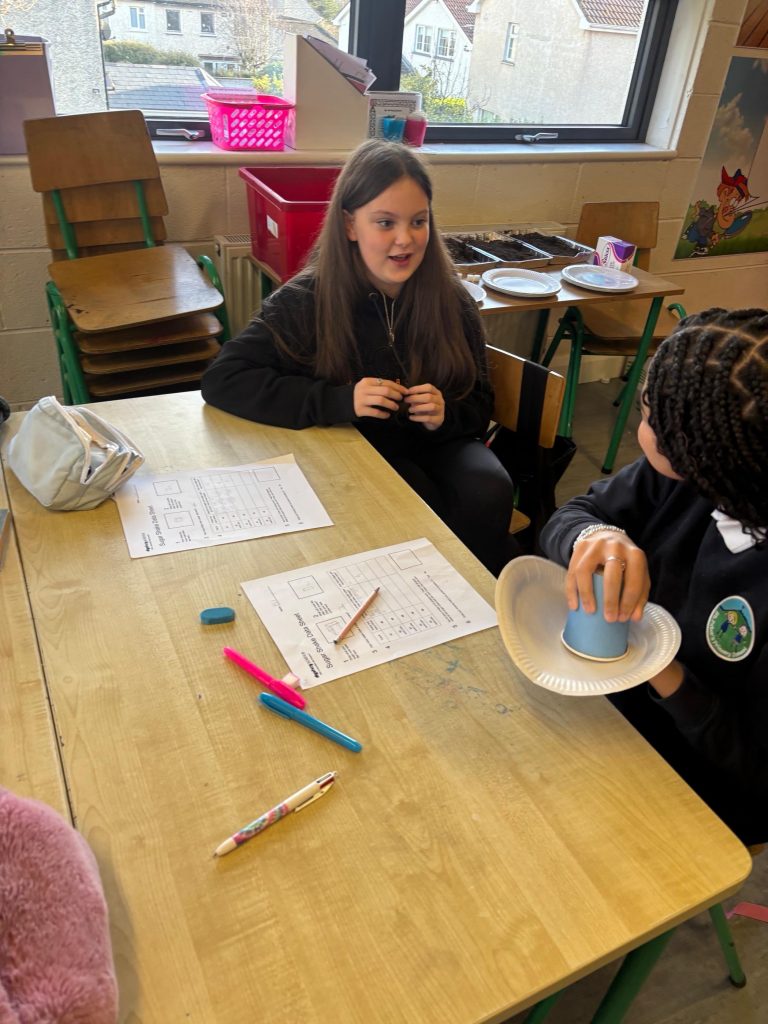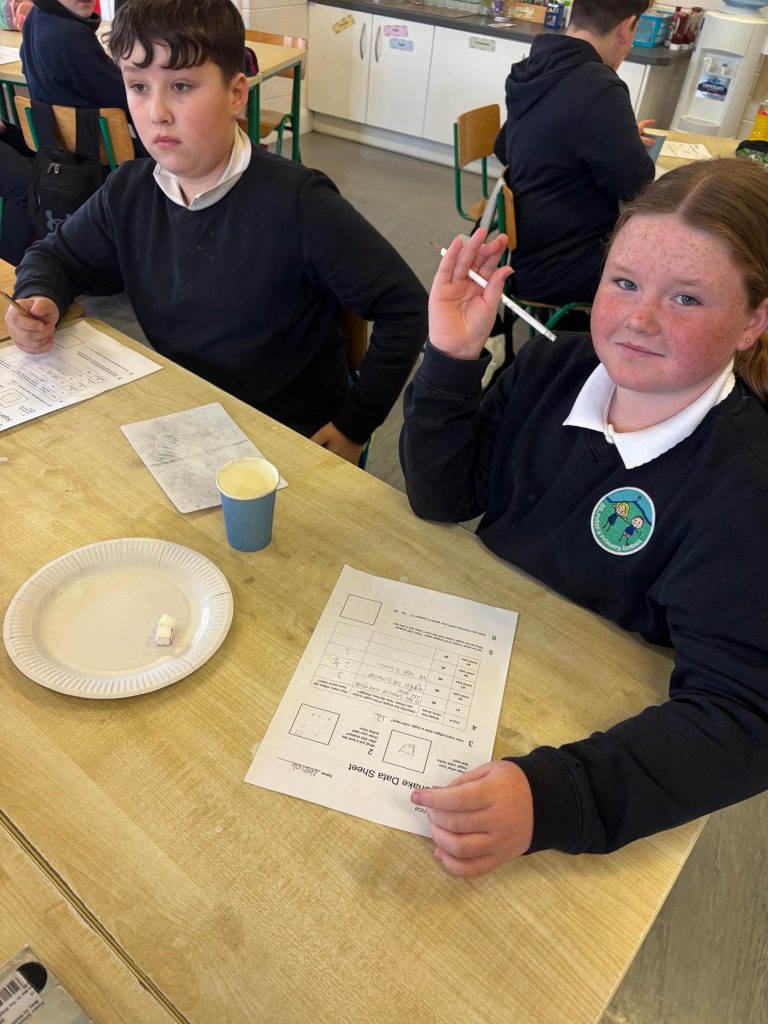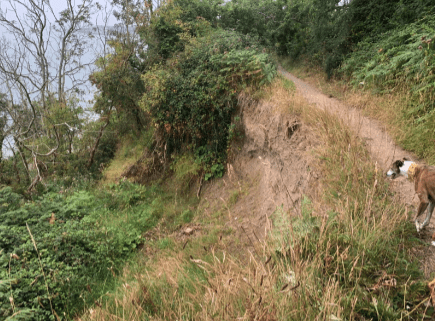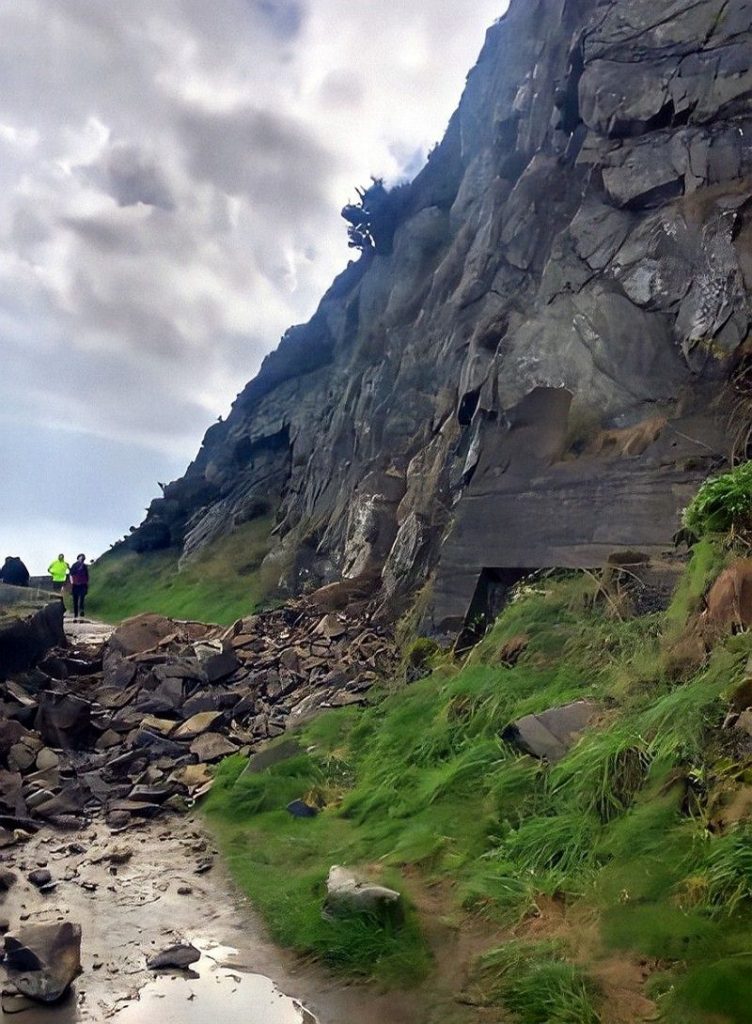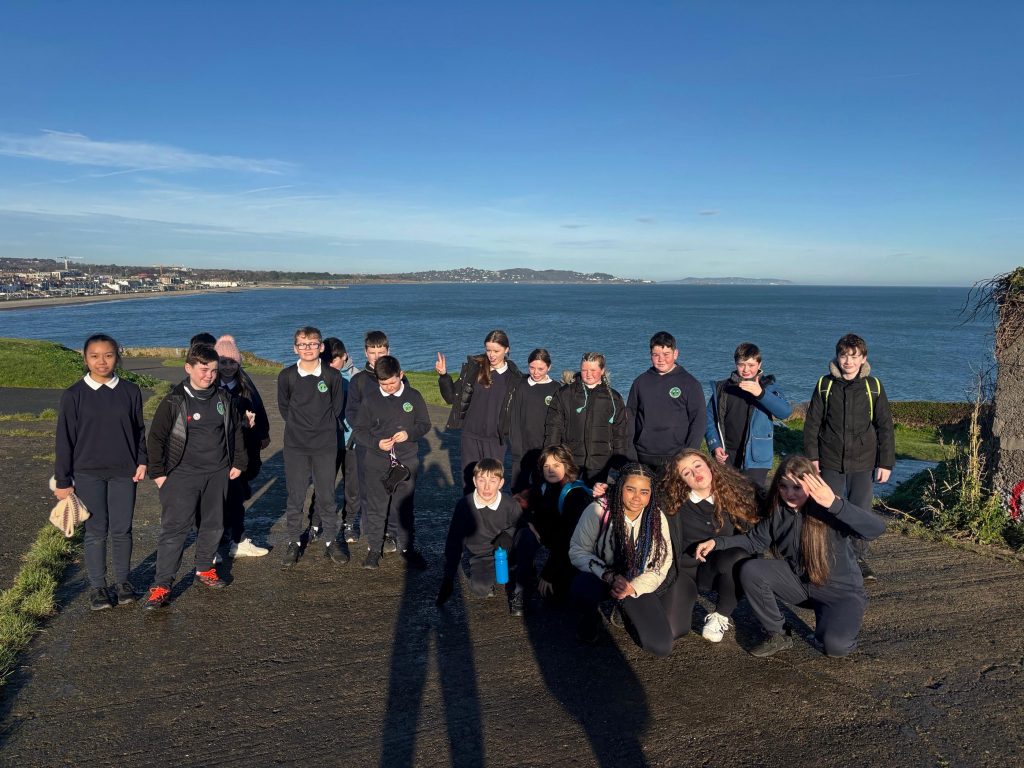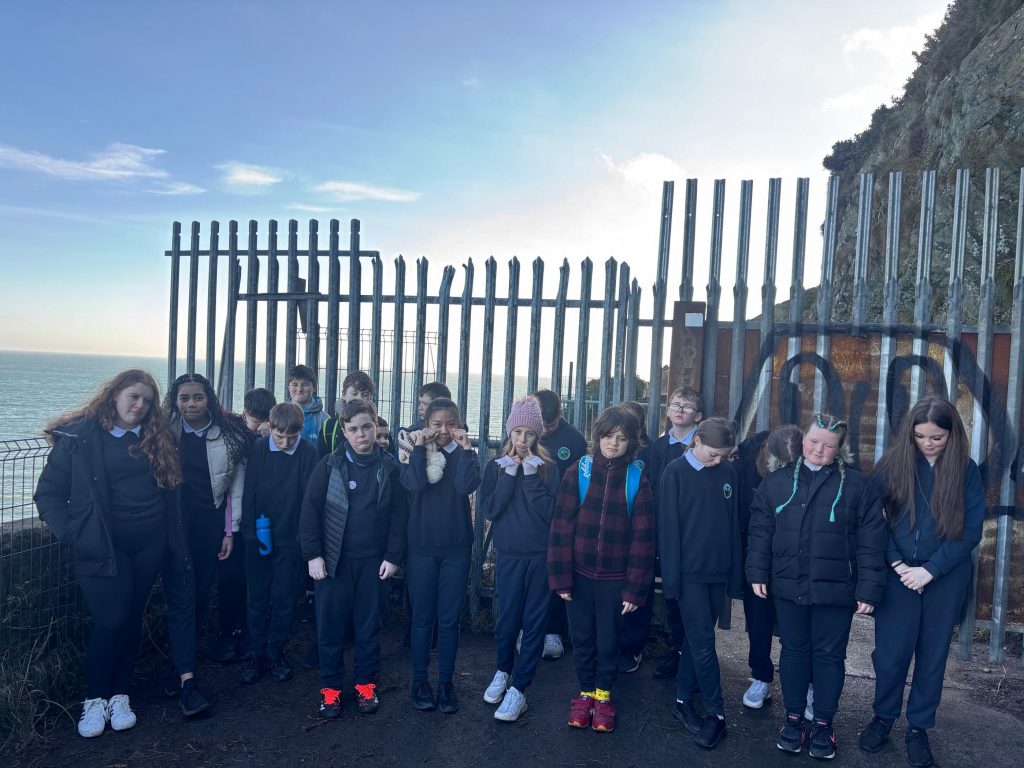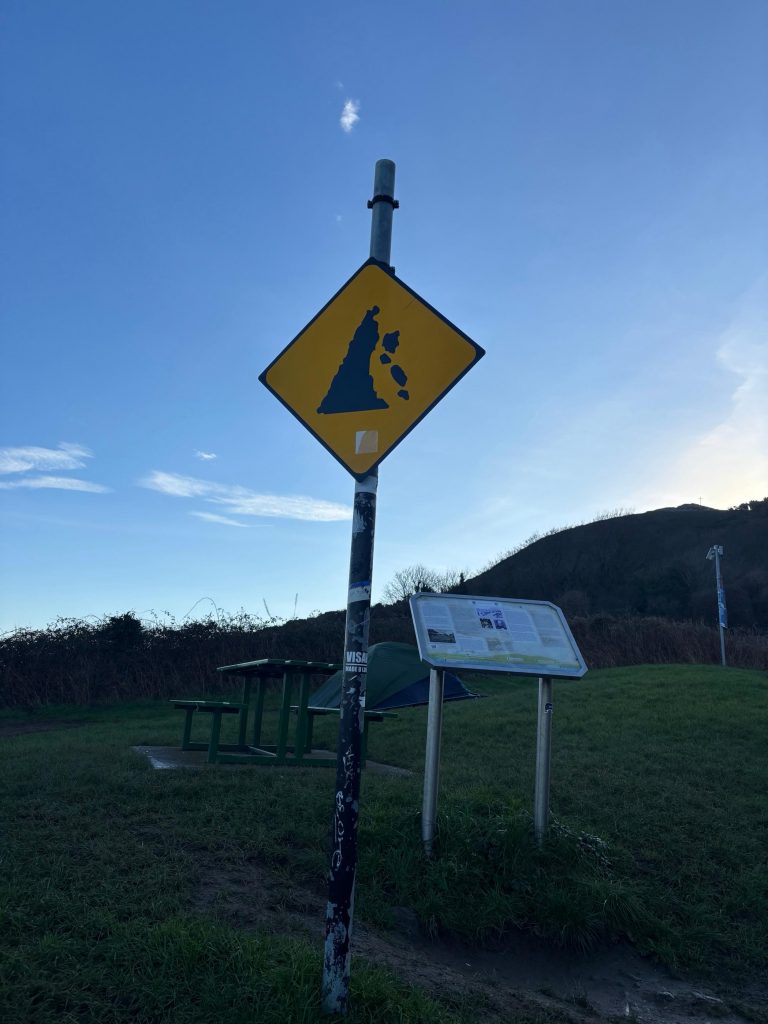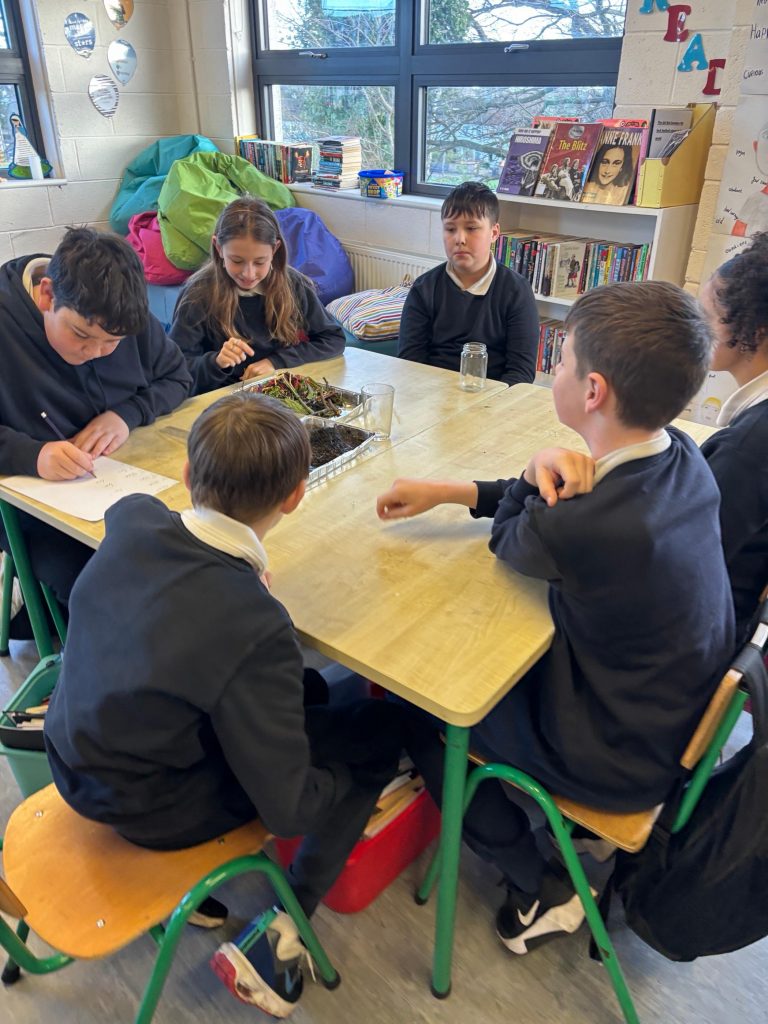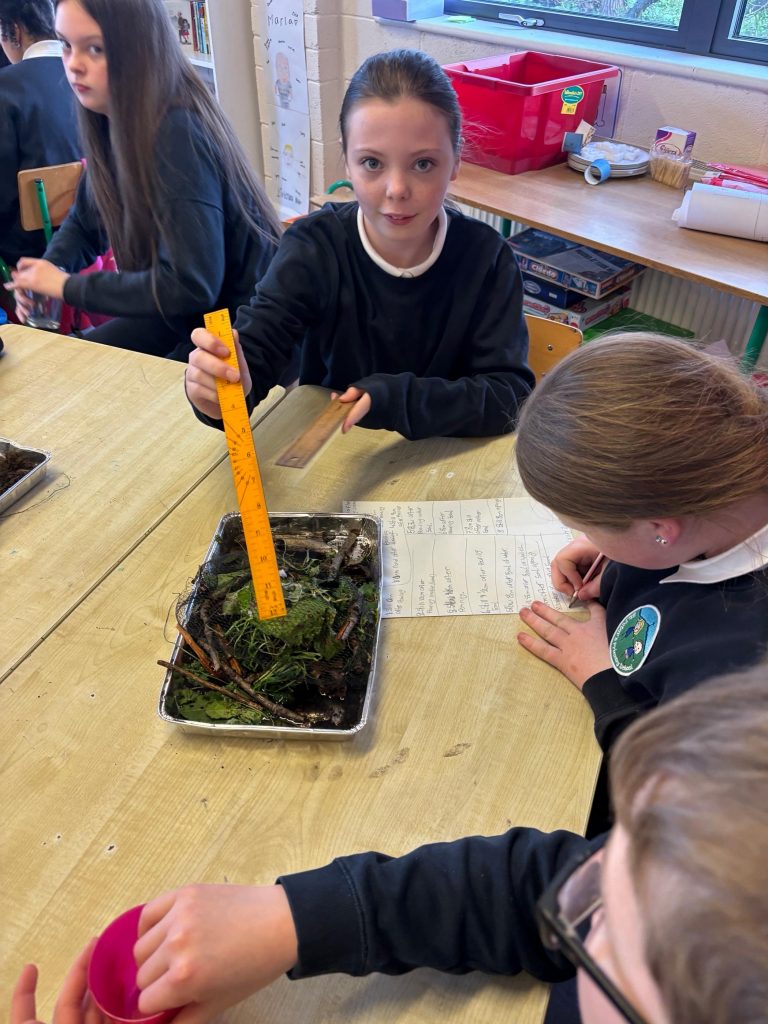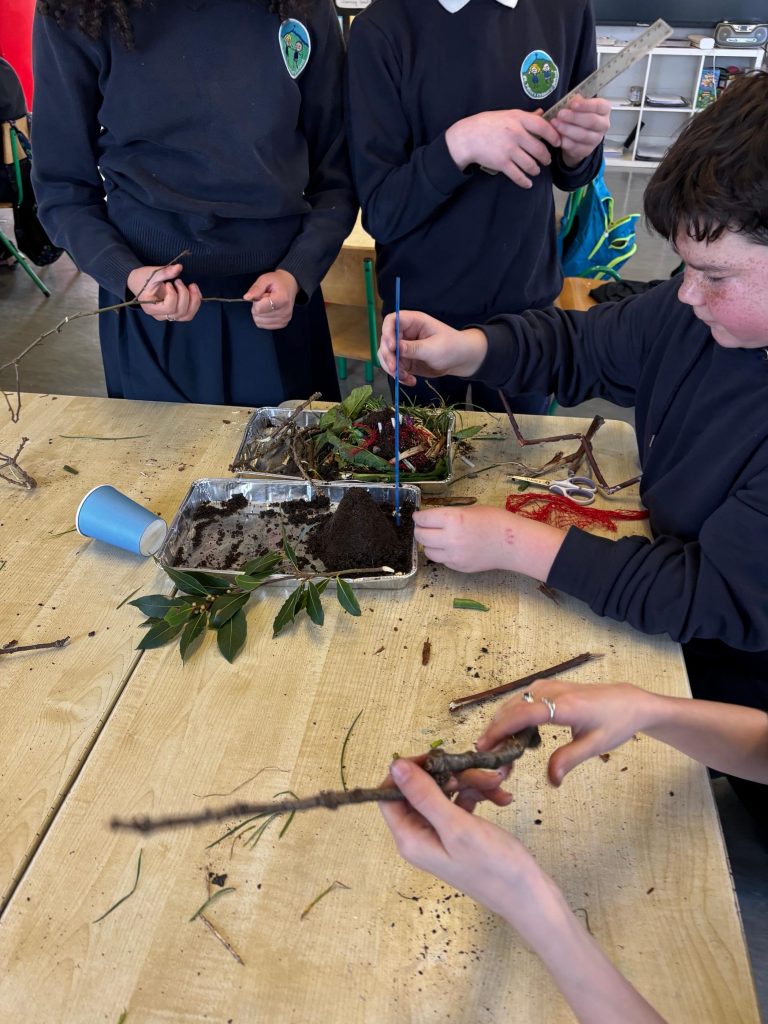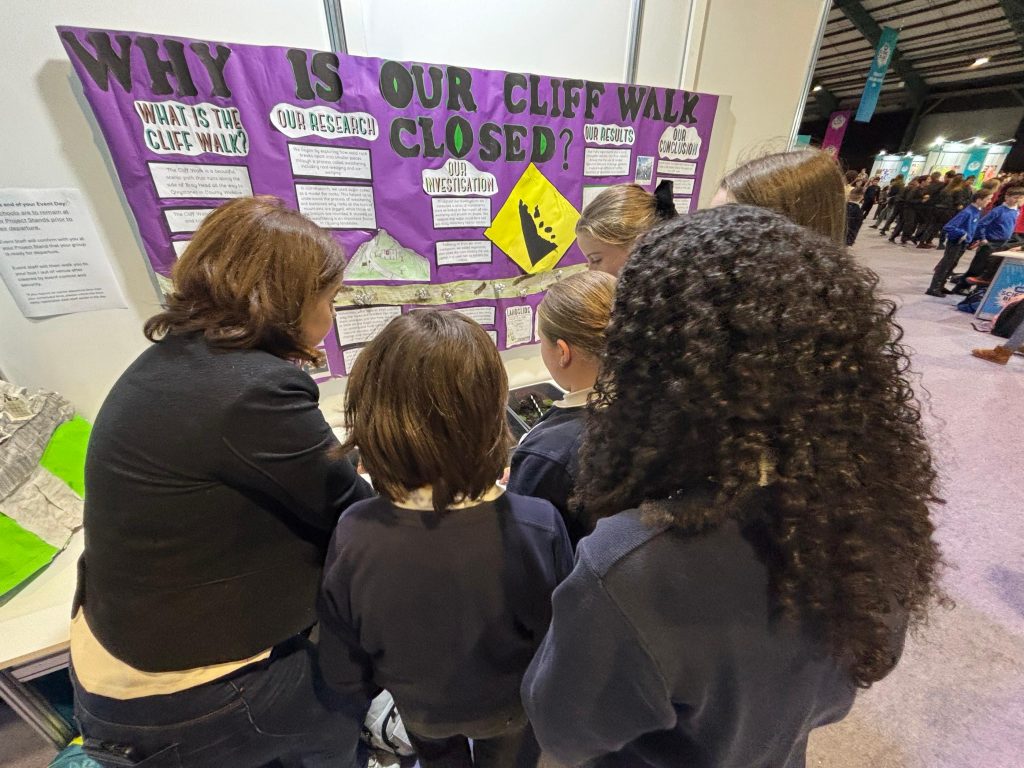Sixth Class took part in the ESB Science Blast this year. Our journey started with deciding what we would choose as our question. We had many interesting discussions in our classroom – asking important questions and talking about what we would like to investigate. We had an amazing day out at the ESB science blast – we loved reading all of the projects from different schools and taking part in the many shows and activities!

Where our Journey Started.
We eventually decided to focus our research on an important, local topic “Why is our cliff walk still closed?”
The Cliff Walk is a beautiful, scenic path that runs along the side of Bray Head all the way to Greystones in County Wicklow.
The Cliff Walk is roughly 7km long and takes about 2 hours to complete.
Unfortunately, The Cliff Walk has been closed since 2021 due to dangerous landslides and rockfall along the pathway.
Wicklow County Council stated that 350,000 people used the cliff walk annually up until it closed in 2021.
The closure of The Cliff Walk has had a massive impact on both Bray and Greystones. The closure has impacted businesses in both areas. It has also prevented the people of both towns from enjoying a walk outdoors, having a negative effect mental and physical health.
How our Research Started.
We began by exploring how solid rock breaks apart into smaller pieces through a process called weathering, including root-wedging and ice-wedging. In our research, we used sugar cubes as a model for rocks. This helped us to understand the process of weathering and explained why rocks at the tops of mountains are jagged, while those at the bottom are rounded. It showed us how weathering is an important factor in causing landslides.
This led us to look at the landslides and rockfall that have caused the closure of the Cliff Walk. From there, we decided to investigate what we could do to help to prevent landslides and rockfall on our Cliff Walk.
Throughout our investigation, we conducted a series of experiments where we looked at the impact of rain, weathering and erosion on slopes. We observed that water made bare soil slide easily, mimicking real landslides.
We also saw how the sugar cubes, like rocks on a cliff, started to tumble and fall down. This showed us how gravity can make loose rocks break away from a cliff.
We visited The Cliff Walk ourselves as part of our research. A gigantic fence closed off the entrance to the walk and signs were placed all along the pathway to alert visitors to the danger of The Cliff Walk. We found it interesting that the DART could still run along the side of the cliff and saw the big metal nets that held the rocks above the tracks from falling. We noticed that there was also a drainage system in place from the DART line down to the back beach in Bray.
What We Did Next.
Following on from our initial investigation, we added vegetation, which acted like roots holding the soil together, and used nets as barriers for rockfall. We also implemented drainage systems to divert the water. We used straws, nets from fruit packaging and plants to mimic these on our own ‘mountains’.
What our Final Results Showed.
After many experiments and a long investigation process. Our final results showed that the use of added vegetation nets and drainage systems made a huge difference to the prevention of landslides and rockfall.
Our Conclusion.
In conclusion, we think that metal nets need to be added above the path on the cliff walk. We think that a drainage system needs to be put in place to carry the water from The Cliff Walk to the sea below. This will help to bind the soil and rock together, making it less likely for rocks or soil to become loose and fall. It will absorb some water and also act as a shield to the wind.
Sixth Class Wowed the Judges and were amazing at presenting their research on the day!

